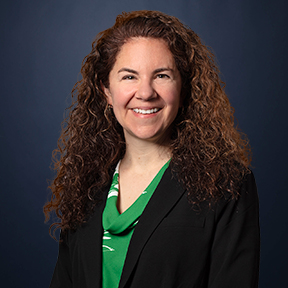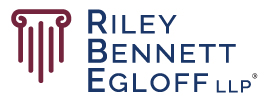Fire and Arson Scene Evidence: The Importance of Proper Evidence Collection
By: Sarah MacGill Marr – RBE Partner
Once a fire occurs, the immediate and primary concern of any responding personnel is to ensure the safety of individuals who may be involved in the fire. However, once that initial safety concern has been addressed, responding personnel quickly shift to protecting and minimizing property loss. Although most firefighters have at least some training in evidence preservation, the top priority of firefighters often is to suppress a fire, not preserve evidence.
After the fire suppression concludes, it is the responsibility of fire investigators, attorneys, and/or experts to obtain and preserve as much evidence as possible from the scene of a fire. This evidence will be critical to understanding how and why the fire occurred, which of course may become a focal point in any dispute arising after the fire. This article provides an overview of the fundamental steps of any fire scene investigation and includes some practical points for attorneys to consider as they counsel clients through this process.
Fire Scene Investigations
Participating in a fire scene investigation can be a physically demanding responsibility of both lawyers and experts alike. Fortunately, the National Fire Protection Association (NFPA) provides extensive guidance on how to perform an investigation properly. Following NFPA guidance provides two critical benefits: (1) an organized and meaningful investigation, and (2) a strong foundation for experts whose opinions could be subject to challenge in litigation.
Participation in the Investigation
Determining who should participate in an inspection of a fire scene is critical. As counsel, we often want to be included in this step of the investigation, but we are not always afforded the opportunity due to circumstances beyond our control. If we are included, however, we should ask as many questions as possible of the person or entity engaging us to participate. These questions should include: what are the theories for including my client in the investigation? What other parties should appear? Is the insurance carrier on notice if this is a residential dwelling? Will the insurance carrier have a representative present? If counsel represents a product manufacturer, we should consider asking whether there are any suppliers who should be notified of the loss. If there are parties whose identity is known at the time of the loss but who are not invited to the scene, this could present issues in the litigation.
Expectation Bias: Defining it and Avoiding It
One issue that regularly presents itself in handling fire litigation is “expectation bias.” The NFPA defines expectation bias as follows:
NFPA 921, Section 17.7.6.3.2 Avoiding Expectation Bias. Expectation bias occurs when an investigator reaches a premature conclusion without sufficient data, using the premature determination to dictate investigative processes.
Expectation bias often arises where experts regularly work for the same insurance carriers or product manufacturers. Because such experts are regularly retained to perform inspections on behalf of the same entities, there is an ever-present risk the experts will look for issues they have seen before. For example, if an expert regularly inspects fires on behalf of a homeowners insurance carrier, and she or he sees fires occur regularly in water heaters, that expert may be naturally drawn to focus on the water heater in a fire loss.
As counsel engage in fire scene investigations and disputes following a fire, we should be aware of expectation bias issues that may arise. Several considerations include: what evidence was collected? What evidence was not collected? Who decided what evidence to collect? Who was involved in persuading experts not to collect certain evidence? Did the investigator immediately focus on certain appliances then look for evidence of failure? Did the investigator appropriately consider arson, or other accidental causes such as smoking?
Fortunately, the NFPA provides a clear framework for helping an expert show that she or he has evaluated all the evidence and reached conclusions based upon that evidence, rather than the expert’s expectations. Ultimately, as investigations progress, experts and investigators begin to form opinions properly and fairly about the cause and origin of fires. However, counsel shall remain vigilant to confirm that the procedure in the NFPA has been followed, rather than the investigator’s pre-conceived expectations and biases.
For example, in Johnson v. Samsung Elecs. Am., Inc., 277 F.R.D. 161 (E.D. La. 2011), a fire occurred in a mobile home. The homeowners initiated a products liability suit and alleged that a window air conditioning unit was defective and caused the fire. Plaintiff retained a fire investigator to evaluate the scene and determine the origin of the fire. Defendants challenged the expert’s credibility and filed a Daubert Motion (in part) to exclude the expert on the basis that the expert’s testimony was not reliable because his conclusions were influenced by “expectation bias.” As the court described, “[t]he gravamen of this challenge is that [the Plaintiff’s expert] ‘focused on the window air conditioning unit almost immediately upon his initial inspection of the fire scene.…’” Id. at 167. The court concluded that the expert did not use flawed methodology in reaching his opinions, but squarely addressed the potential expectation bias by saying:
Defendants may cross examine [the expert] with respect to alleged presumptions or expectations he had with respect to the window air conditioning unit at the time of his initial inspection of the burned premises. It is for the jury to decide whether [the expert] had such presumptions and expectations with respect to the window air conditioning unit, and if he did, the effect of that on the credibility of his testimony.
Id. In that case, the court ultimately deferred to the jury on whether the expert allowed expectation bias to influence his opinions. As counsel work with experts on the scene of a fire, counsel should be keenly aware of potential expectation bias issues and should continue to evaluate them as discovery and investigation progress.
Identifying and Handling the Physical Evidence
The NFPA provides the following guidance for identifying “physical evidence” at a fire scene:
NFPA 921, Section 17.2.1 Physical evidence, defined generally, is any physical or tangible item that tends to prove or disprove a particular fact or issue. Physical evidence at the fire scene may be relevant to the issues of the origin, cause, spread, or the responsibility of the fire.
Under this definition, physical evidence can include numerous types of evidence,such as: appliances, sprinkler systems, smoke alarms, machinery, burned portions of physical structures, or furniture. Any of these items may contain clues such as burn patterns or charring which could help experts identify the cause and origin of the fire. Securing this evidence is critical to any dispute that may arise following the fire. However, as an investigation continues, issues may arise regarding what physical evidence should be collected.
NFPA 921, Section 17.2.2 elaborates, “[t]he decision on what physical evidence to collect at the incident scene for submission to a laboratory or other testing facility for examination and testing, or for support of a fact or opinion, rests with the fire investigator.”
Ultimately, the fire investigator is responsible for determining what physical evidence should be collected from a fire scene. However, when counsel are engaged to participate in a fire scene inspection, counsel should pay close attention to the collection on scene. The evidence collected from the scene will most likely be the evidence in any litigation that ensues. Accordingly, this step is critical for litigation preparation.
Preservation of the Evidence
Once the evidence has been identified and collected, the next critical step is to properly preserve the evidence. The NFPA provides as follows:
NFPA 921, Section 17.3.1.2 The responsibility for the preservation of the fire scene and physical evidence does not lie solely with the fire investigator, but should begin with arriving fire-fighting units or police authorities. Lack of preparation may result in the destruction, contamination, loss, or unnecessary movement of physical evidence. Initially, the incident commander, and later, the fire investigator should secure or ensure the security of the fire scene form unnecessary and unauthorized intrusions and should limit fire suppression activities to those that are necessary.
Counsel participating in a fire scene investigation should carefully observe the evidence preservation process, but assuming fire investigators and/or other first responder professionals are engaged in the process, counsel should not assume responsibility for handling evidence. However, counsel should take careful notice of who is responsible for each piece of evidence and assist with any documentation that may be necessary later to show the chain of custody of the evidence that has been preserved. The evidence secured from the fire scene will ultimately be the evidence in the case. Accordingly, proper preservation is essential to the anticipated litigation.
The NFPA also recommends handling evidence by hand if possible:
NFPA 921, Section 17.9.1. Hand Delivery Whenever possible, it is recommended that physical evidence be hand delivered for examination and testing. Hand delivery minimizes the potential of the physical evidence becoming damaged, misplaced, or stolen.
For example, if after careful analysis and investigation, the fire investigator has identified an appliance as a potential cause of the fire, she or he should arrange to have that evidence delivered by hand, if possible, to a secure storage facility. This minimizes the risk of damage that could occur in the shipping and handling process.
Conclusion
When participating in a fire scene inspection, counsel should exercise judgment in identifying the appropriate entities to participate in the scene inspection and should work with inspectors to secure a protocol that complies with the NFPA. Counsel should discuss with any experts involved the importance of adhering to the requirements outlined in the NFPA to avoid expectation bias. Once on scene, counsel should work to confirm that all evidence is properly removed and secured. By doing so, counsel is protecting the artifacts and information which will ultimately become evidence in the case.

Author Sarah MacGill Marr
Sarah represents local, regional, and national companies in commercial litigation in Indiana and around the country. She represents clients in all stages of the litigation process, including trial, and has successfully defended claims for breach of contract, tortious interference with contractual and business relationships, alleged product defects, and premises liability.
Sarah concentrates her practice on commercial cases involving business torts and claims for breach of contract, but also often works with product manufacturers to defend claims. Sarah has a particular interest in structured negotiations and other strategies which may help clients avoid litigation. She regularly counsels clients regarding best practices to avoid litigation, including tips for negotiating and drafting their contracts.
© Riley Bennett Egloff LLP
Disclaimer: Article is made available for educational purposes only and is not intended as legal advice. If you have questions about any matters in this article, please contact the author directly.
Permissions: You are permitted to reproduce this material in any format, provided that you do not alter the content in any way and do not charge a fee beyond the cost of reproduction. Please include the following statement on any distributed copy: “By Sarah MacGill Marr© Riley Bennett Egloff LLP – Indianapolis, Indiana. www.rbelaw.com”
Posted on January, 7 2022 by Sarah MacGill Marr
